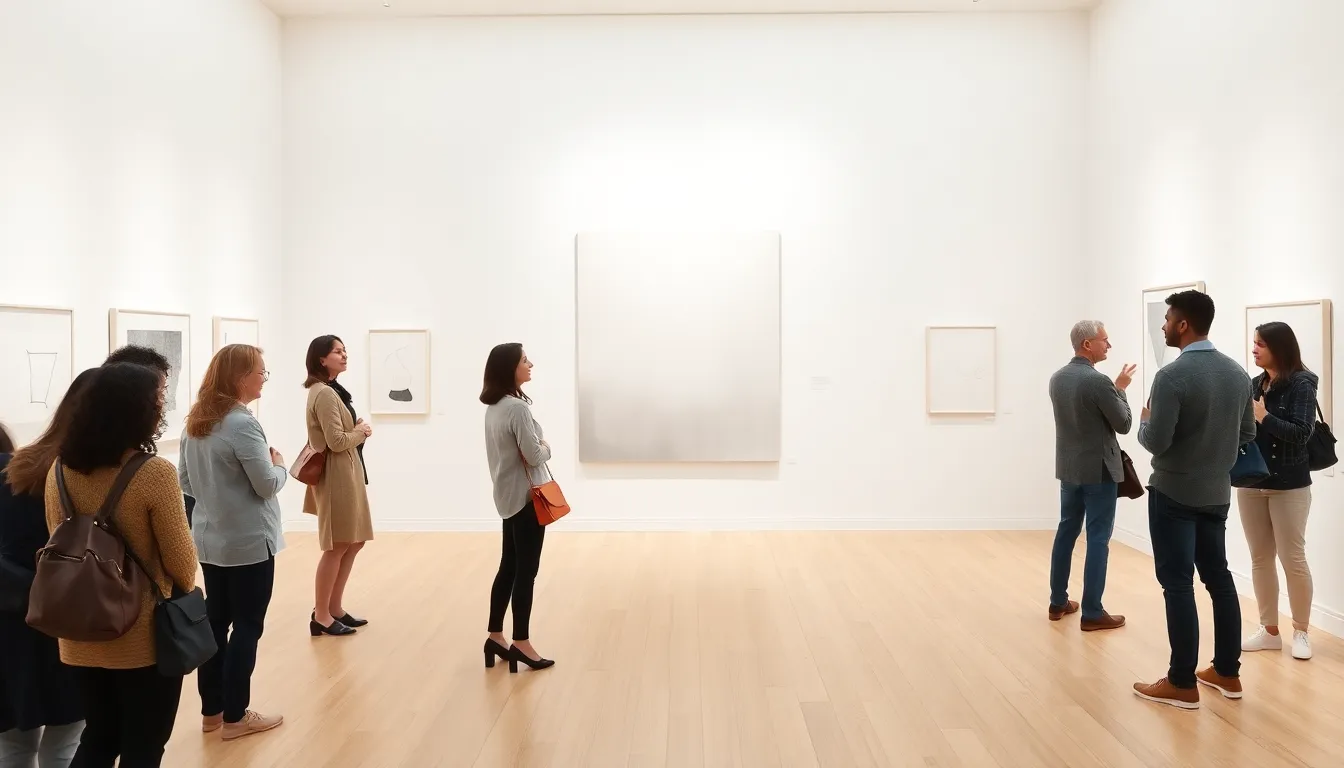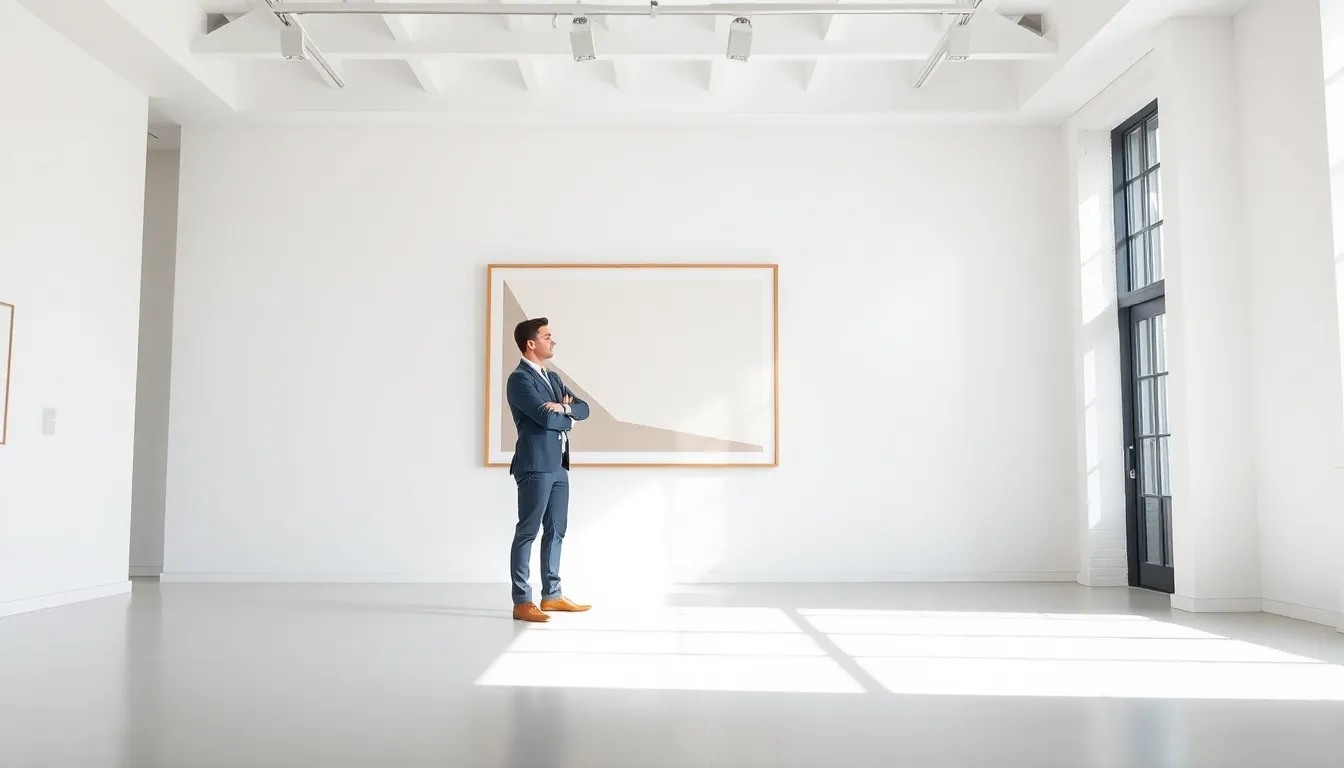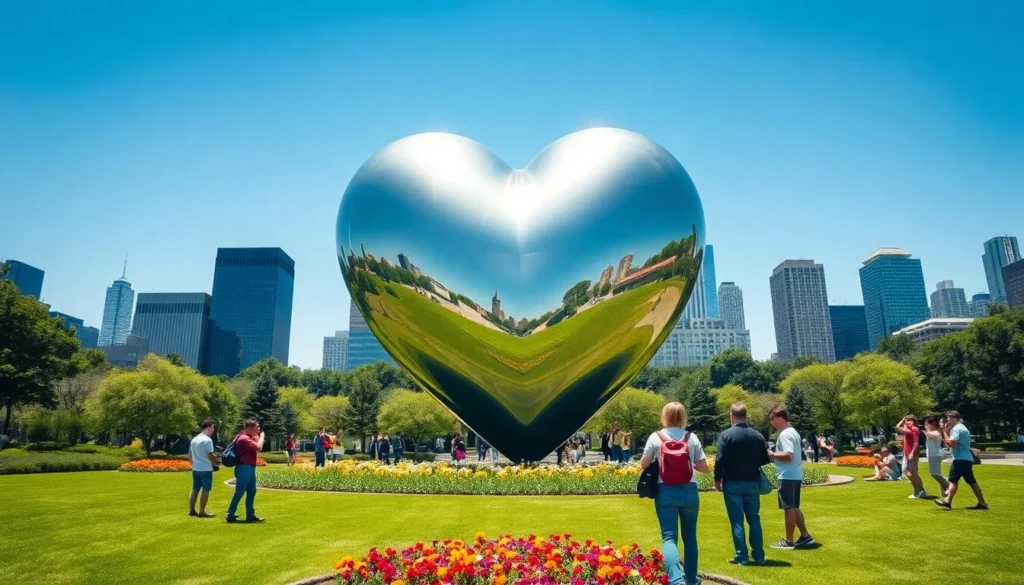Table of Contents
ToggleImagine walking into a gallery where white walls and simple geometric shapes greet you. No chaos, just a calm space for the mind to roam. Welcome to the world of contemporary minimalist art. If you’re picturing a blank canvas or wondering why there’s so much hype about these understated pieces, you’ve clicked on the right article. In this exploration, we will unpack what contemporary minimalist art truly is, its intriguing history, and the talented artists who breathe life into this seemingly simple aesthetic. Get ready to jump into an art movement that challenges perceptions and invites deeper thought, all while keeping it stylishly simple.
Defining Contemporary Minimalist Art

Contemporary minimalist art is more than just a visual experience: it’s a philosophy. At its core, it emphasizes simplicity and essential forms. Artists in this genre strip away the unnecessary, leaving only the fundamental elements of art: color, line, and shape. This approach doesn’t strive for complexity. Instead, it invites the viewer to engage with art in a way that promotes reflection. Through this lens, every piece becomes a dialogue, inviting interpretations while challenging viewers to find beauty in simplicity. Whether it’s a monochromatic palette or a singular, repetitive motif, each work reveals the inherent power of less.
Historical Context and Evolution
The roots of contemporary minimalist art trace back to the mid-20th century. It emerged as a reaction against the tumultuous expressiveness found in abstract expressionism. Key figures like Donald Judd and Agnes Martin sought to break free from traditional artistic constraints, preferring clean lines and organized forms. This evolution mirrored broader cultural shifts towards minimalism in architecture and design.
Key Characteristics of Minimalism
Minimalism is marked by certain hallmark traits. First and foremost, simplicity reigns, works often use limited colors and materials. Texture plays a significant role without overwhelming the viewer. Also, the concept of space is vital: negative space is just as important as the artwork itself. Minimalists encourage audiences to consider the environment surrounding the art, making every interaction a unique experience.
Notable Contemporary Minimalist Artists
Several artists have become synonymous with contemporary minimalist art. For instance, Yayoi Kusama is revered not just for her polka dots but for her thought-provoking installations that blend minimalism with vibrant patterns. Another pivotal figure is Dan Flavin, whose use of fluorescent light tubes transforms spaces, challenging perceptions of color and ambiance. These artists, among others, have significantly contributed to the nuanced understanding of minimalism, providing fresh perspectives while remaining true to its principles.
Major Works and Their Impact
Some monumental works stand out within the minimalist movement. One might consider Donald Judd’s “Untitled” series, which showcases simple boxes that philosophically engage with light and space. Similarly, the installations of Olafur Eliasson often blend minimalist aesthetics with environmental themes. These works have not only attracted widespread acclaim but have also reshaped public spaces, elevating community interaction with art.
The Role of Space and Environment
A crucial aspect of minimalist art is how it responds to the environment. Many artists design their installations to interact dynamically with surrounding architecture and light. For example, Mary Corse’s “White Light White Pampas Grass” allows natural light to play off various surfaces, creating distinct experiences for viewers depending on their position. This engagement promotes a sense of mindfulness and awareness of one’s surroundings.
Interpreting Minimalist Art: Viewer Experience
Viewing minimalist art presents a unique journey. Unlike traditional art forms that often convey direct narratives, minimalist pieces invite personal interpretation. Each viewer’s experience is subjective, influenced by both personal context and emotional state. This open-ended nature promotes deeper introspection and contemplation. Often, visitors find themselves drawn into a meditative state, engaging with not just the art but also their own thoughts and feelings. The absence of complex themes allows for greater focus on emotions, fostering connections that can be profoundly personal.




